In This Issue
- MWC: Secure Cloud
- Apple Moves to MDM
- Cloud Mobile Music
- Report from the CEO
- MS Mobile Cloud 1st
- CISO: Cybersecurity
- New Encryption Bill
- Def Sec: No Back Door
- Cloud Storage on Rise
- Pentagon Chief Help
- Cybersec Precautions
- EU & US Data Transfer
- Apple’s iPhone Fight
- Verizon Digital Media
- Cisco and NetApp
- Telefonica and IBM
- Coming DCIA Events
MWC: Connected World Demands Secure Cloud
Excerpted from Information Age Report by Chloe Green
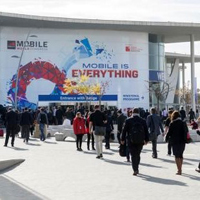 With Mobile World Congress (MWC) Barcelona over for another year, we’ve now had a chance to digest everything that was on show last week.
With Mobile World Congress (MWC) Barcelona over for another year, we’ve now had a chance to digest everything that was on show last week.
This conference, which is arguably the planet’s best venue for mobile industry networking, looked at the Internet of Things (IoT) and the Connected World, anything and everything from developments such as 5G to newly connected toothbrush devices that ensure consumers brush their teeth as the dentist intended.
What all these new technology innovations seem to have in common is the capability to generate obscene – and yet potentially very useful – amounts of data.
How organizations manage and use this data – and how they keep it secure – will be a major challenge and one of the key predictors of success across many industries.
With an overwhelming array of new technology producing ever increasing amounts of often sensitive data, now more than ever there is scope for hackers to breach personal and company sensitive data.
With reports highlighting the need to safeguard the confidential data on employees’ smartphones and tablets… Read More
Apple Moves into Mobile Device Management
Excerpted from Seeking Alpha Report by Mark Hibben
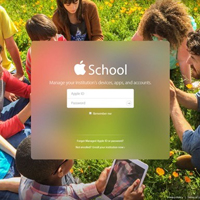 Apple’s just announced Apple School Manager will make managing iOS devices much easier for school districts.
Apple’s just announced Apple School Manager will make managing iOS devices much easier for school districts.
Apple School Manager is a cloud service accessed through any web browser.
This could be Apple’s most important expansion in enterprise cloud services to date.
Until now, Apple has mostly left enterprise mobile device management (MDM) of its iOS devices to third parties such as IBM.
With the arrival of Apple School Manager, Apple takes a big step forward to bolster its position in education, as well as cloud services.
Apple School Manager paves the way for similar enterprise services. The enterprise MDM market may never be the same.
It was a little over a year ago that I wrote about the ongoing competition between Apple and Google in the education market.
Even though specific market share numbers are hard to come by, there’s no question Google’s Chromebooks have had a substantial impact… Read More
Cloud Mobile Music Services to Grow at 10.21%
Excerpted from Mobile Commerce Report
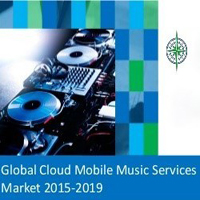 The music industry is undergoing a digital revolution driven by cloud-based online music, where consumers can access music anytime from anywhere.
The music industry is undergoing a digital revolution driven by cloud-based online music, where consumers can access music anytime from anywhere.
The industry is moving from a la carte ownership model toward subscription and ad-supported music, which would change consumers’ listening habits and would prompt them to experiment more with new music.
This would result in an extended reach of music to a wider population.
Cloud is one of the promising technologies for many music service providers to store and enable access to its customers worldwide.
It enables consumers with legal access to online music and is rapidly being adopted as a music proliferation model because it enhances portability, enabling subscribers to access digital content stored in remote servers irrespective of the device used.
The report, Global Cloud Mobile Music Services Market 2015-2019, has been prepared based on an in-depth market analysis with inputs from industry experts… Read More
Report from DCIA CEO Marty Lafferty
 The DCIA is pleased to announce our new partnership with the Global System for Mobile Communications Association (GSMA), an organization of mobile operators and related companies devoted to supporting the standardization, deployment, and promotion of the GSM mobile telephone system.
The DCIA is pleased to announce our new partnership with the Global System for Mobile Communications Association (GSMA), an organization of mobile operators and related companies devoted to supporting the standardization, deployment, and promotion of the GSM mobile telephone system.
GSMA unites nearly 800 operators with more than 250 companies in the broader mobile ecosystem, including handset and device makers, software companies, equipment providers, and Internet companies, as well as organizations in associated industry sectors.
The GSMA also produces industry-leading events, such as Mobile World Congress (MWC) in Barcelona and Shanghai.
Our first joint effort will be MWC Shanghai, which will take place from June 29th through July 1st.
Exhibitions will be set-up in the Shanghai New International Exhibition Center (SNIEC) and the conference will be held at the adjacent Kerry Hotel Pudong.
Now in its fifth year, MWC Shanghai is a very unique gathering that brings together industry participants ranging from C-Level mobile executives to end-user consumers passionate about mobile.
By including end-users, MWC Shanghai appeals to the entire mobile marketplace in an exceptional way.
If you’re engaged in mobile or an industry that supports mobile or are looking to make a splash in the Asia market, this truly is a must-attend event.
The 2015 conference and exhibition were the largest ever attracting more than 40,000 attendees, 8,000 companies, thousands of senior executives, more than 650 press and industry analysts, 350 exhibitors, delegates from 101 countries, and 59 speakers in 20 conference sessions.
Under the theme “Mobile Unlimited,” the fourth annual MWC Shanghai focused on how mobile technology — from connected cars and wearable tech to mobile payments and smarter cities — is aligning with distributed computing to revolutionize and enhance every aspect of individuals’ lives.
To download the complete post-event report and learn more about event demographics, please click here.
2016 exhibitors already include companies from China, Germany, Hong Kong, Indonesia, Korea, Singapore, Taiwan, and Thailand.
Do you have your finger on the mobile future?
Do you want to share a development that will change the way people communicate?
Then please submit your speaking proposal today.
To discuss how your company can make a splash in June at MWC Shanghai 2016, please contact our sales team.
Or to attend this spectacular event, please buy your pass today while limited-time discounts are available.
We hope you’ll be able to join with us and participate in Mobile World Congress Shanghai 2016. Share wisely, and take care.
Microsoft’s New Mobile-First, Cloud-First Security
Excerpted from Examiner Gazette Report by Dave Shanahan
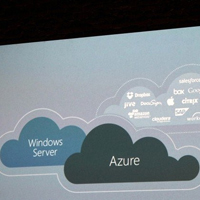 The Azure Active Directory Identity Protection, available for public preview in early March, detects suspicious activities for end-users and privileged identities arising from incidents like brute-force attacks, leaked credentials, sign-ins from unfamiliar locations, and infected devices.
The Azure Active Directory Identity Protection, available for public preview in early March, detects suspicious activities for end-users and privileged identities arising from incidents like brute-force attacks, leaked credentials, sign-ins from unfamiliar locations, and infected devices.
It uses signals from Microsoft’s applications and data from the Microsoft Security Response Center, as well as Microsoft’s Digital Crimes Unit.
The future will bring more collaboration between the two companies due to considerable enterprise customer overlap, according to BlackBerry.
This is one way for Microsoft to try to stand out from cloud infrastructure rivals Amazon Web Services and Google Cloud Platform.
To help do more with insights from Azure Security Center, Microsoft released a Power BI Dashboard that enables users to visualize, analyze, and filter recommendations and security alerts from anywhere, including a mobile device.
The Azure Security Center can now collect crash events from Azure-hosted virtual machines, analyze them, and alert customers… Read More
New CISO Can Improve US Government Cybersecurity
Excerpted from Passcode Report by Malena Carollo
 The person who fills the newly created US Chief Information Security Officer (CISO) position will be able to improve the government’s cybersecurity, a 77 percent majority of Passcode’s pool of digital security experts said.
The person who fills the newly created US Chief Information Security Officer (CISO) position will be able to improve the government’s cybersecurity, a 77 percent majority of Passcode’s pool of digital security experts said.
Hiring a CISO to oversee the security practice of federal agencies and the overhaul of the federal government’s computer systems is a major part of the Cybersecurity National Action Plan that President Obama recently unveiled — and some security experts initially worried it would prove a massive (and maybe impossible) undertaking.
But Influencers who responded to Passcode’s survey appeared cautiously optimistic about the new CISO’s ability to drive change across the government.
“Naming a federal CISO is the right move,” said Tom Cross, CTO of Drawbridge Networks.
“The best way to identify critical weak spots like the Office of Personnel Management (OPM) database and concentrate the right level of resources on them is to take a high level, systemic view of everything the federal government has.”
However, like many other Influencers, Mr. Cross pointed to potential obstacles to the CISO’s success.
“Success in this role in the federal government may be tough,” he said… Read More
Lawmakers Introduce Compromise Encryption Bill
Excerpted from The Hill Report by Katie Bo Williams
 A bipartisan pair of lawmakers on Monday introduced legislation to establish a national commission exploring how police can get at encrypted data without endangering Americans’ privacy.
A bipartisan pair of lawmakers on Monday introduced legislation to establish a national commission exploring how police can get at encrypted data without endangering Americans’ privacy.
The measure, from House Homeland Security Committee Chairman Michael McCaul (R-TX) and Senator Mark Warner (D-VA), comes as Apple is fiercely opposing a court order requiring it to help the FBI unlock the iPhone of one of the San Bernardino shooters.
“The challenge of protecting national security and digital security simultaneously is complex.
The ongoing Apple vs. FBI dispute is only a symptom of a much larger problem.
But we are almost certain to see this scenario repeated unless the larger issue is addressed,” McCaul said in a Monday statement.
The bill is intended to cut through the heated rhetoric that has defined the encryption debate in the wake of the terror attacks in Paris and San Bernardino, CA.
The FBI and law enforcement officials have warned that extremists are increasingly using encrypted platforms to go dark… Read More
Defense Secretary Takes Position against Data Back Door
Excerpted from NY Times Report by Nicole Perlroth
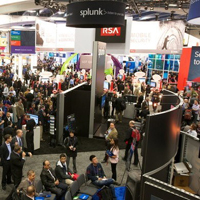 Defense Secretary Ashton Carter assured an audience of computer security experts Wednesday that he was not in favor of a “back door” that would give the government access to data that is protected by encryption.
Defense Secretary Ashton Carter assured an audience of computer security experts Wednesday that he was not in favor of a “back door” that would give the government access to data that is protected by encryption.
Speaking at the annual RSA Conference, Secretary Carter sought common ground with companies worried by Apple‘s fight with the Federal Bureau of Investigation (FBI) over access to an iPhone.
“Just to cut to the chase, I’m not a believer in back doors or a single technical approach,” Secretary Carter said to loud applause during a panel discussion at the conference.
“I don’t think it’s realistic. I don’t think that’s technically accurate.”
Apple is resisting a court order that would require it to create software to break the password mechanism in an iPhone used by one of the assailants in the December mass shooting in San Bernardino, CA.
The FBI argues that it is not asking for any sort of permanent back door and is merely asking for help in circumventing a single phone’s password protection.
People in the tech industry worry, however, that the request for help in the San Bernardino case is merely a prelude… Read More
Cloud Storage on Rise Despite Lack of Encryption Planning
Excerpted from Charity Digital News Report by Austin Clark
 Despite a lack of encryption planning, a new study has revealed that over 80 per cent of organizations are planning to store sensitive and confidential data in the cloud by 2018.
Despite a lack of encryption planning, a new study has revealed that over 80 per cent of organizations are planning to store sensitive and confidential data in the cloud by 2018.
The report, based on independent research by the Ponemon Institute and sponsored by Thales and Vormetric Data Security, revealed that:
More than half of respondents (56 per cent) are transferring sensitive or confidential data to the cloud — and this will rise to a total of 84 per cent in the next two years.
Support for both cloud and on-premise deployment was rated the most important consideration when deploying encryption solutions.
Employee and HR data is the most commonly encrypted data — higher even than payment data, intellectual property or financial records — indicating a higher sensitivity to protecting personal information.
The number one perceived threat to data exposure is employee mistakes, followed by system or application malfunction rather than external attack or malicious insiders… Read More
Pentagon Chief Appeals to Silicon Valley for Cybersecurity Help
Excerpted from LA Times Report by W. J. Hennigan
 Defense Secretary Ashton Carter will visit a crucial front this week in the war the Pentagon considers its greatest potential threat: cyberspace.
Defense Secretary Ashton Carter will visit a crucial front this week in the war the Pentagon considers its greatest potential threat: cyberspace.
Carter will visit a Pentagon outpost in the heart of Silicon Valley, speak at a cybersecurity conference in San Francisco, and go to Microsoft and Amazon headquarters in Seattle to highlight the risks of cyberattacks and the need for greater digital cooperation with the Pentagon.
His visit to the West Coast — his third in less than a year, more than he’s made to Kabul or Baghdad — marks the latest effort by the Obama administration to recruit telecommunications, social media, and other technology companies as partners in national security operations despite deep suspicion in Silicon Valley about government surveillance.
The distrust erupted in public after National Security Agency contractor Edward Snowden leaked details about the government’s vast domestic and overseas surveillance programs in 2013.
The gulf has widened in the weeks since the Justice Department asked a federal court to force Apple to write software so FBI agents could unlock an iPhone used by one of the killers in the December 2nd mass shooting in San Bernardino… Read More
5 Cybersecurity Precautions for Small Firms
Excerpted from AICPA Insights Report
 With busy season off to another running start, it’s important to remember that cyber attackers are busy, too.
With busy season off to another running start, it’s important to remember that cyber attackers are busy, too.
With readily monetizable information on hand that can be sold easily on the black market, your practice is an especially attractive target for attackers.
Frequent news reports of breaches at large organizations and government entities might lead you to believe you don’t stand a chance if targeted.
Fortunately, this is not the case.
The following basic precautions can significantly reduce your risk and mitigate damage if you experience a cybersecurity incident.
1). Locate, classify and separate information by risk level.
The highest risk information for most firms is going to be financial account information such as bank routing and account numbers, credit and debit card numbers, and usernames and passwords for online account access… Read More
EU & US Trans-Atlantic Data Transfer Deal
Excerpted from NY Times Report by Mark Scott
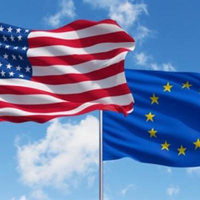 American and European officials released details on Monday about a new trans-Atlantic data transfer agreement, prompting a new round of debate about how companies like Google move digital information between the two regions.
American and European officials released details on Monday about a new trans-Atlantic data transfer agreement, prompting a new round of debate about how companies like Google move digital information between the two regions.
The pact is the formal version of an agreement hashed out in early February after often-bitter negotiations, revamping the rules for how technology giants like Facebook and other conglomerates like General Electric look up, collect and manage online data, including social media posts, search queries and e-commerce purchases.
As part of the new agreement — known as the EU-US Privacy Shield — companies will face stricter rules over how they move people’s digital data from the European Union to the United States.
American officials have also agreed to new limits on the powers of the country’s intelligence agencies to gain access to Europeans’ online information when it is transferred to the United States.
“The US has different structures to Europe, but both sides offer robust privacy protections,” Penny Pritzker, the United States Commerce Secretary, said in an interview in February.
“The challenge was to show Europe how our system works, because we don’t have a single overriding privacy law… Read More
Apple’s iPhone Fight with US Government
Excerpted from NY Times Report
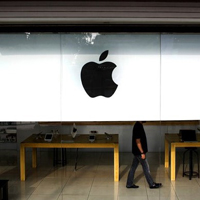 The FBI is trying to force Apple to help investigators gain access to an iPhone used by Syed Rizwan Farook in the December mass shooting in San Bernardino, CA.
The FBI is trying to force Apple to help investigators gain access to an iPhone used by Syed Rizwan Farook in the December mass shooting in San Bernardino, CA.
Bureau officials say that encrypted data in Mr. Farook’s phone and its GPS system may hold vital clues about where he and his wife, Tashfeen Malik, traveled in the 18 minutes after the shootings, and about whom they might have contacted beforehand.
It sounds like a simple problem but the solution would be complex.
The password mechanism built into the phone will erase the phone’s data after 10 incorrect password attempts.
That security is standard issue on newer iPhones and to get around it, Apple says it would have to create new software.
The company has been fighting a federal court order requiring it to provide access to the FBI, on the grounds that it violates its right to due process.
Apple also says that forcing it to write new software violates its First Amendment right, an argument that has some precedent… Read More
Verizon Digital Media Services Connects with Google Cloud
Excerpted from Verizon Press Announcement
 Verizon Digital Media Services, the next-generation content delivery platform now part of AOL, today announced that customers can now use Google Cloud CDN Interconnect to more safely and securely transfer content between the Verizon Digital Media Services content delivery network (CDN) and Google Cloud Platform.
Verizon Digital Media Services, the next-generation content delivery platform now part of AOL, today announced that customers can now use Google Cloud CDN Interconnect to more safely and securely transfer content between the Verizon Digital Media Services content delivery network (CDN) and Google Cloud Platform.
The high-performance interconnections provide a direct link between Google Cloud Platform and Verizon Digital Media Services’ CDN, allowing content to move between the two directly without traversing other networks, providing increased availability and reduced latency for important content.
“Our commitment to open collaborations with companies like Google ultimately expands the choices our customers have to move their data and content efficiently, securely and affordably,” said Verizon Digital Media Services Chief Technology Officer Rob Peters.
“The combined power of Verizon Digital Media Services and Google Cloud Platform gives our customers the edge they need in today’s digital media environment that demands constant innovation.”
Verizon Digital Media Services customers that use Google Cloud Platform can save more than 65 percent on their cloud egress costs… Read More
Cisco and NetApp All-Flash Converged Infrastructure
Excerpted from Market Wired Report
 “We’ve had really good success with NetApp All Flash FAS and the FlexPod infrastructure.
“We’ve had really good success with NetApp All Flash FAS and the FlexPod infrastructure.
“We have a higher confidence in our data. We know it works. And we’re going to continue expanding that as fast as possible,” said Satish Sambandham, Senior Manager, Product Development, at Citrix Systems.
Customers recognize that flash equals speed.
But as all-flash array pricing has come down, there’s a growing recognition that flash provides significant management benefits as well, especially when integrated within the simplified operation of a converged infrastructure solution.
Today, Cisco and NetApp the developer of the FlexPod converged infrastructure (CI) solution, have seen FlexPod partner and customer enthusiasm grow for the performance, agility and economic benefits of the all-flash data center.
Citrix solutions, used by more than 100 million people globally, power business mobility through highly secure, mobile workspaces that provide instant access to apps, desktops, data, and communications on any device, over any network and cloud.
Like most software companies, Citrix constantly improves and updates its products to deliver value to customers… Read More
Telefonica Selects IBM to Modernize Processes
Excerpted from IBM Press Announcement
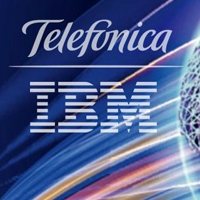 IBM and Telefonica today announced a ten-year contract for IBM to modernize and manage different Telefonica Human Resources and Finance Management processes of the telecommunications giant over the next 10 years.
IBM and Telefonica today announced a ten-year contract for IBM to modernize and manage different Telefonica Human Resources and Finance Management processes of the telecommunications giant over the next 10 years.
As part of the agreement, IBM is acquiring three companies of Tgestiona – a Telefonica company specialized in finance and human resources processes management for Communications Sector – in Spain, Argentina and Peru.
Telefonica turned to IBM to drive three strategic objectives: simplify operations, drive efficiencies, and deliver a next-generation client experience. IBM differentiated with its consult-to-operate approach and its digital reinvention point of view, which aligns with Telefonica’s transformation strategy.
“IBM was chosen as our strategic partner based on its ability to demonstrate market-leading best practices in finance and HR, deliver a superior user experience to Telefonica, and demonstrate automation and digital innovation while respecting the cultural diversity of our clients,” said Javier Delgado, Director Planning, Projects and Global Services of Telefonica.
IBM’s market-leading process expertise and cloud operational platforms will help these companies modernize, deliver efficiencies, and improve client experience… Read More
Coming Events of Interest
IoT Asia 2016 — March 30th-31st in Singapore. IoT Asia returns in 2016 with fresh insights on Internet of Things (IoT) developments around the world. The 3rd edition aims to further advance conversations and ideas on IoT and how it will impact our lives by delving into the real issues.
Delivery of Things World — April 25th-26th in Berlin, Germany. DevOps specialists, continuous development strategists, architect newbies, development geeks, and cloud geniuses from across the spectrum of DevOps transformation come together at this stimulating and innovative event.
DataCloud Europe 2016 — June 8th-9th in Monte Carlo, Monaco. The 2016 conference will focus on cloud computing advances and changes in data management, with a stellar line-up of speakers including global infrastructure leaders and subject matter experts.
Cloud and DevOps World Forum 2016 — June 21st-22nd in London, England. Now in its eighth year, C&DWF is firmly established as the leading content-led exhibition for the European Cloud and DevOps community and the premiere meeting place for CIOs.
Security of Things World — June 27th-28th in Berlin, Germany. Topics include securing cyber physical systems for IoT, expanding IT security with intelligence-led ops, business continuity management considerations, data privacy in an interconnected world, and security strategies.
Mobile World Congress Shanghai — June 29th – July 1st in Shanghai, China. MWC Shanghai is a very unique gathering that brings together industry participants ranging from C-Level mobile executives to end-user consumers passionate about mobile.
Industry of Things World Europe — September 19th-20th in Berlin, Germany. IoT business models, new IoT markets and strategies, product lifecycle management, next generation data handling and value assessment, IoT organizational impacts, and IoT security issues.
